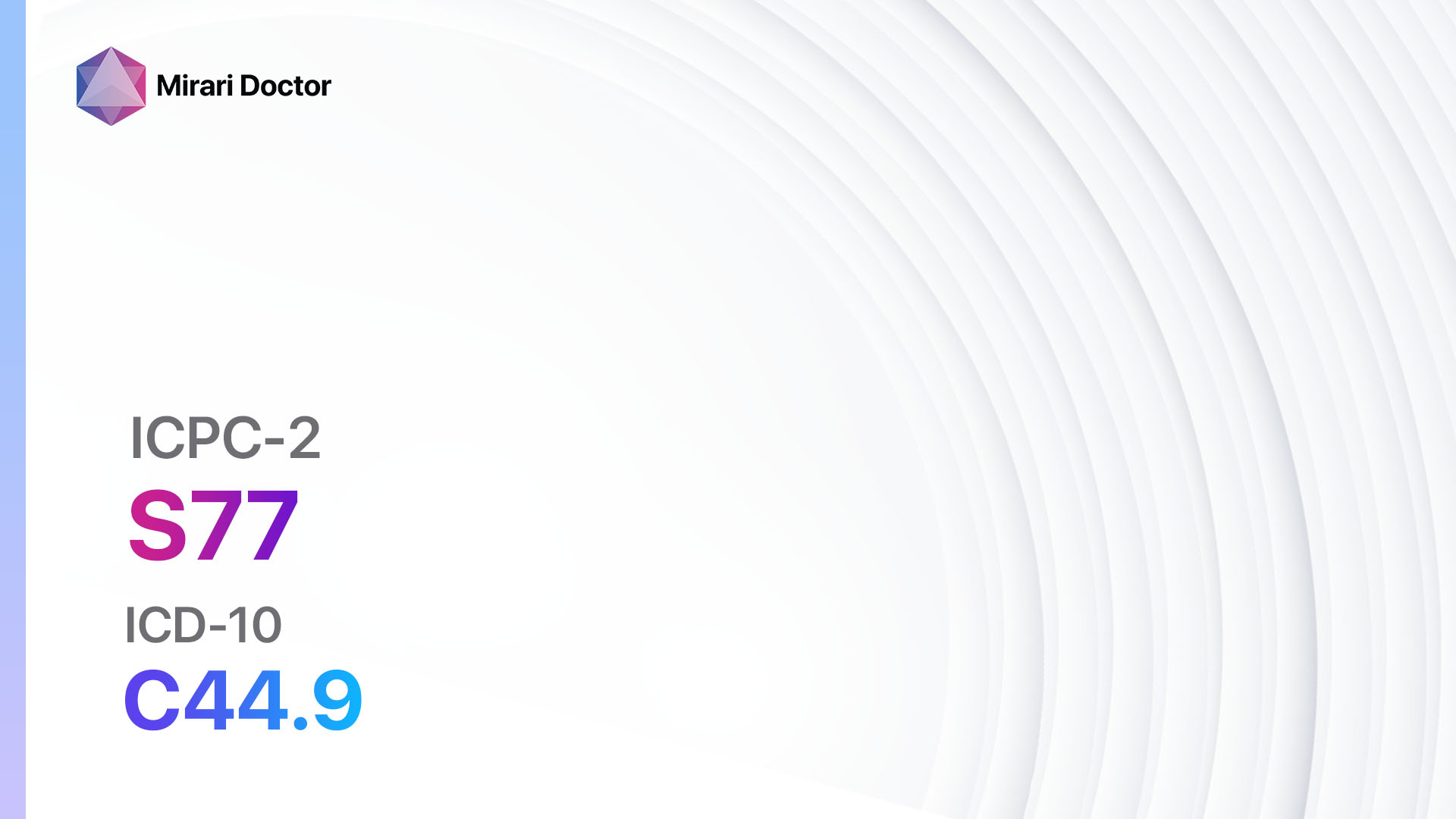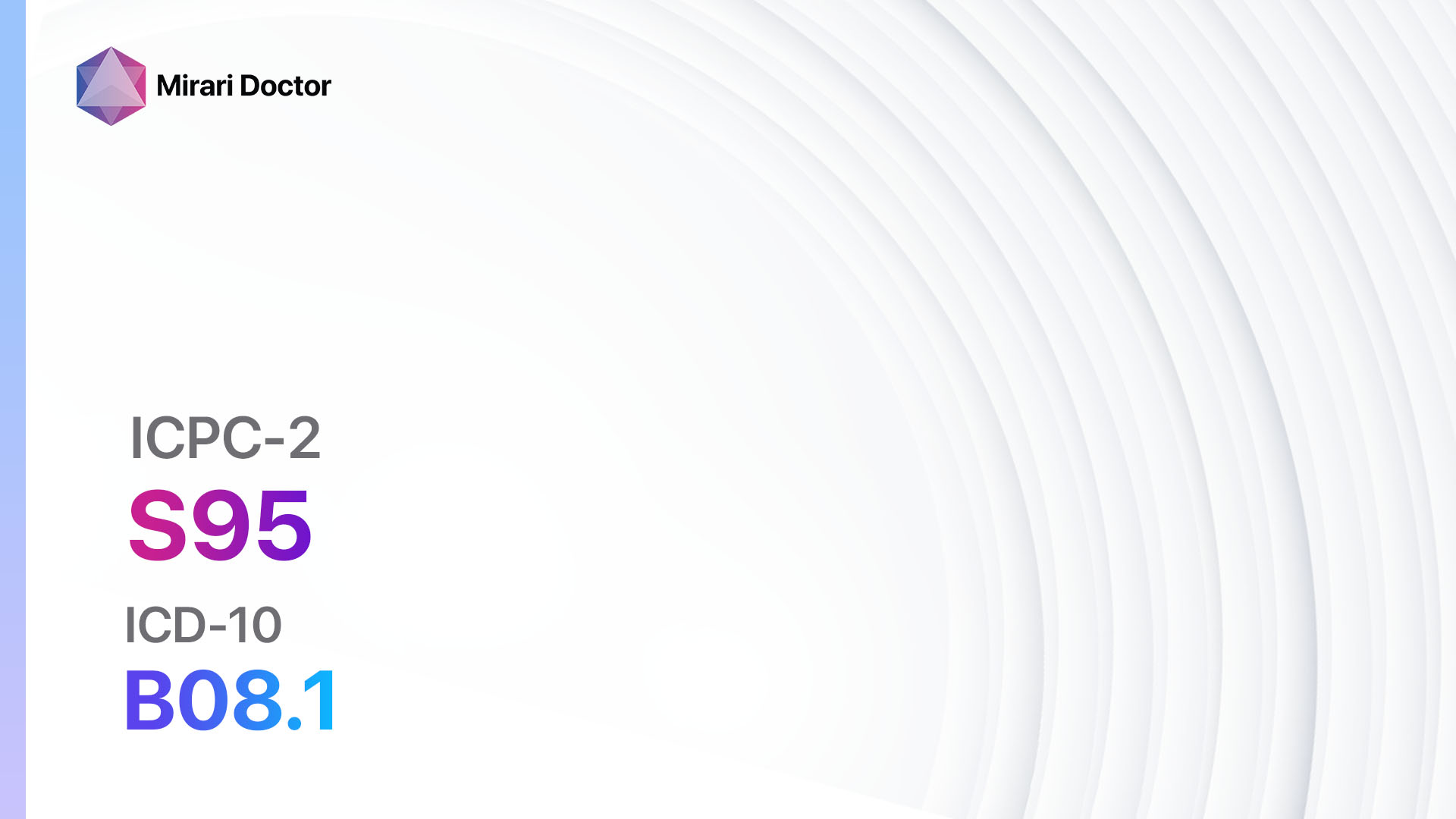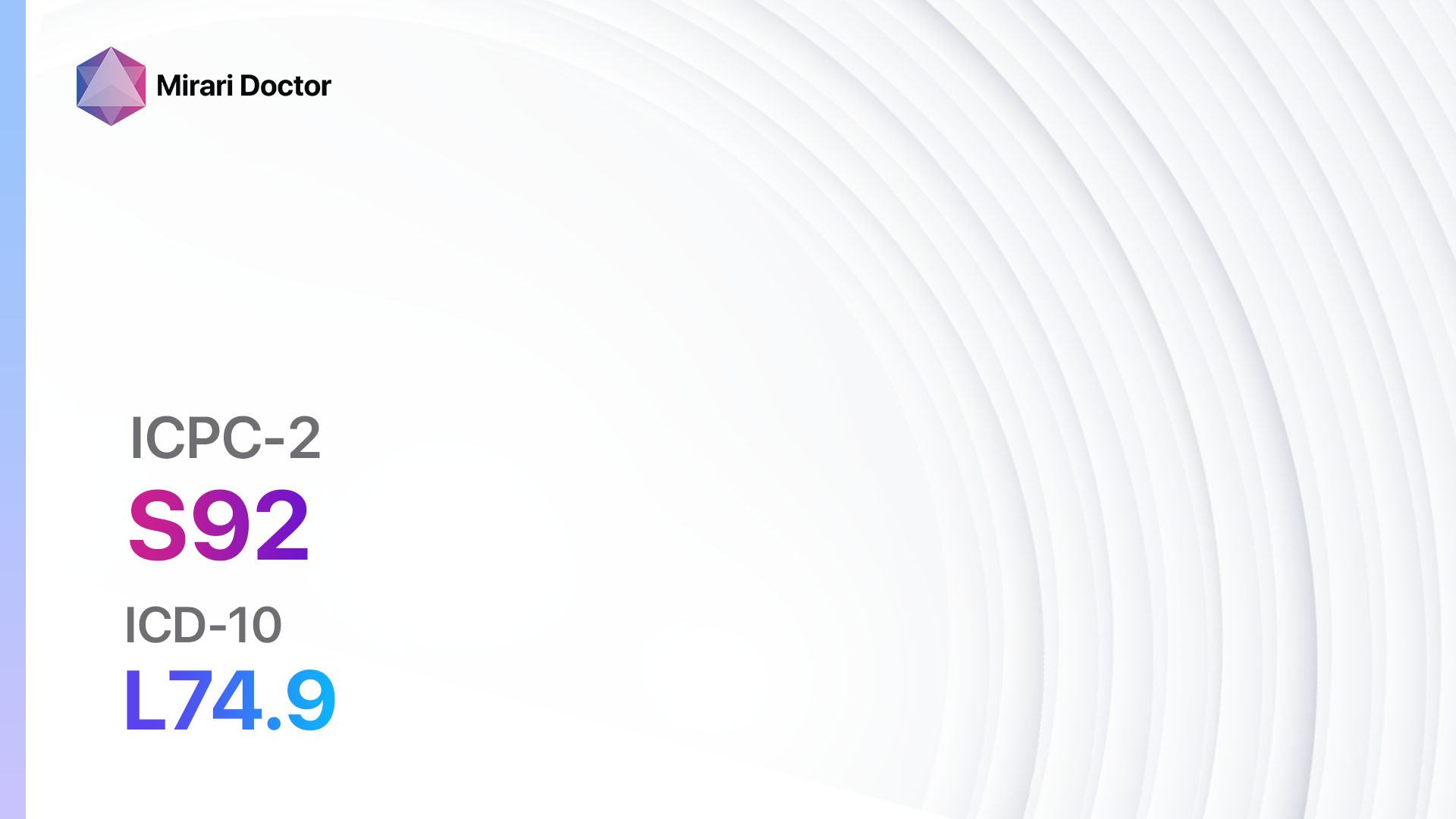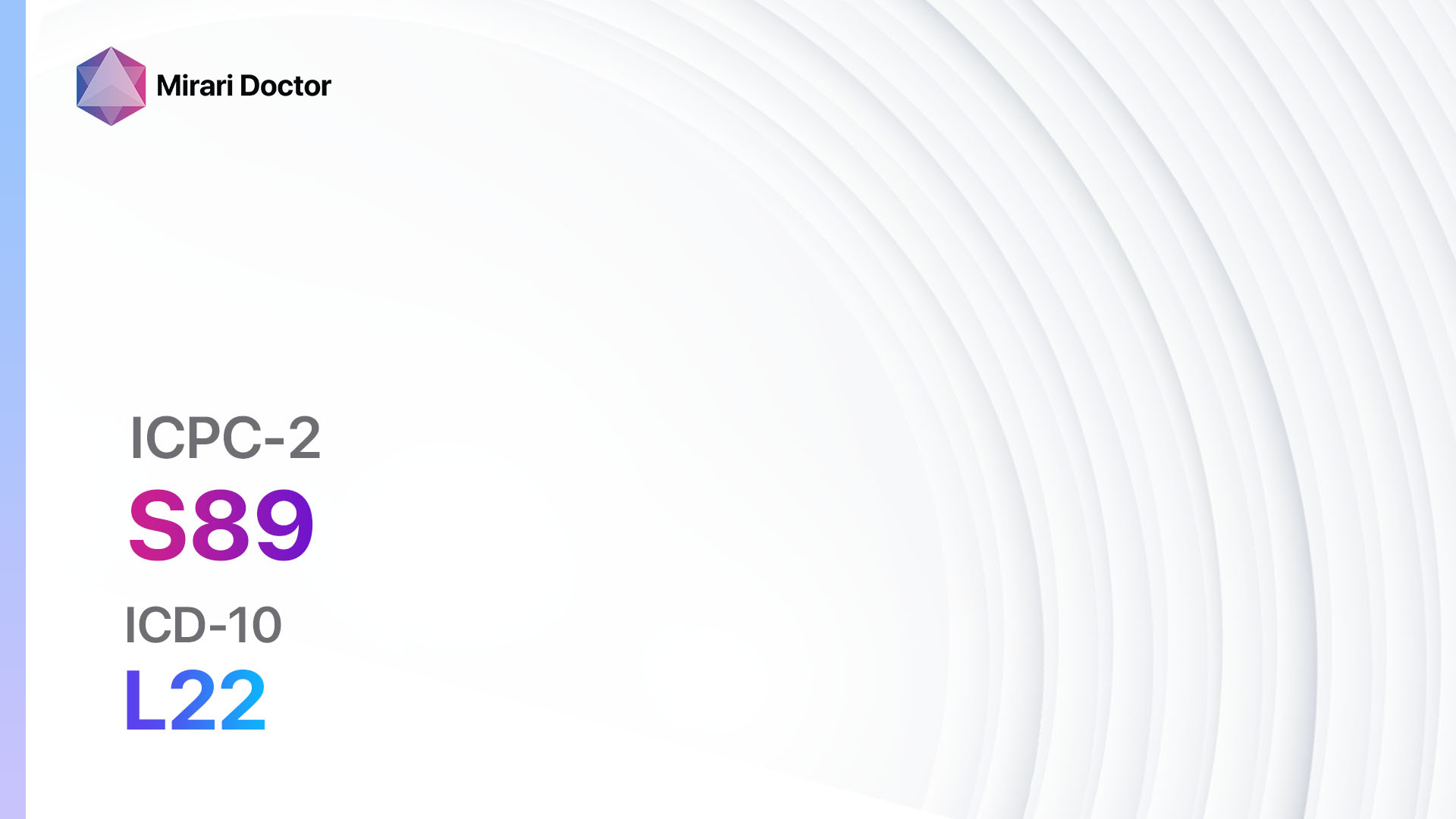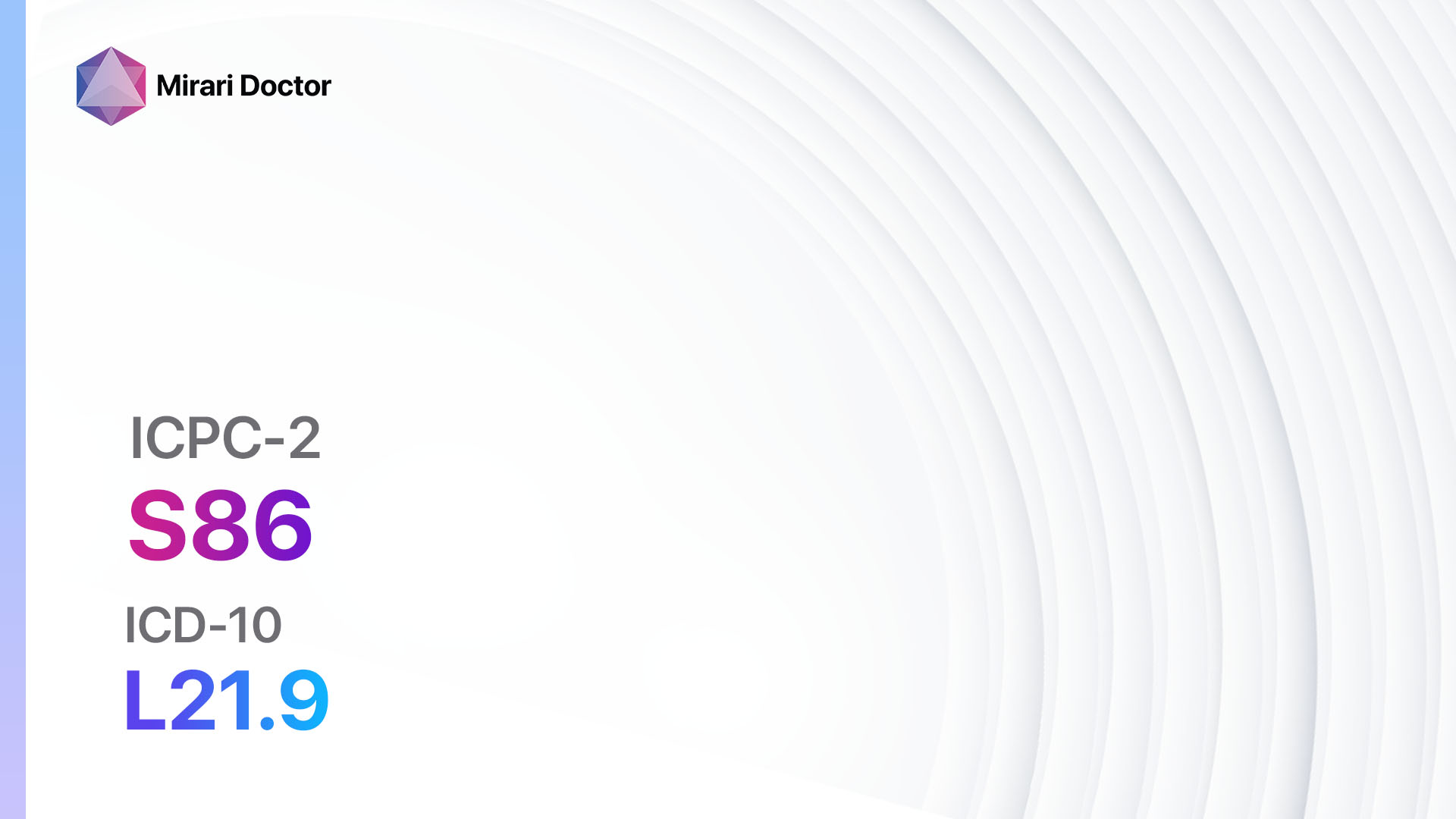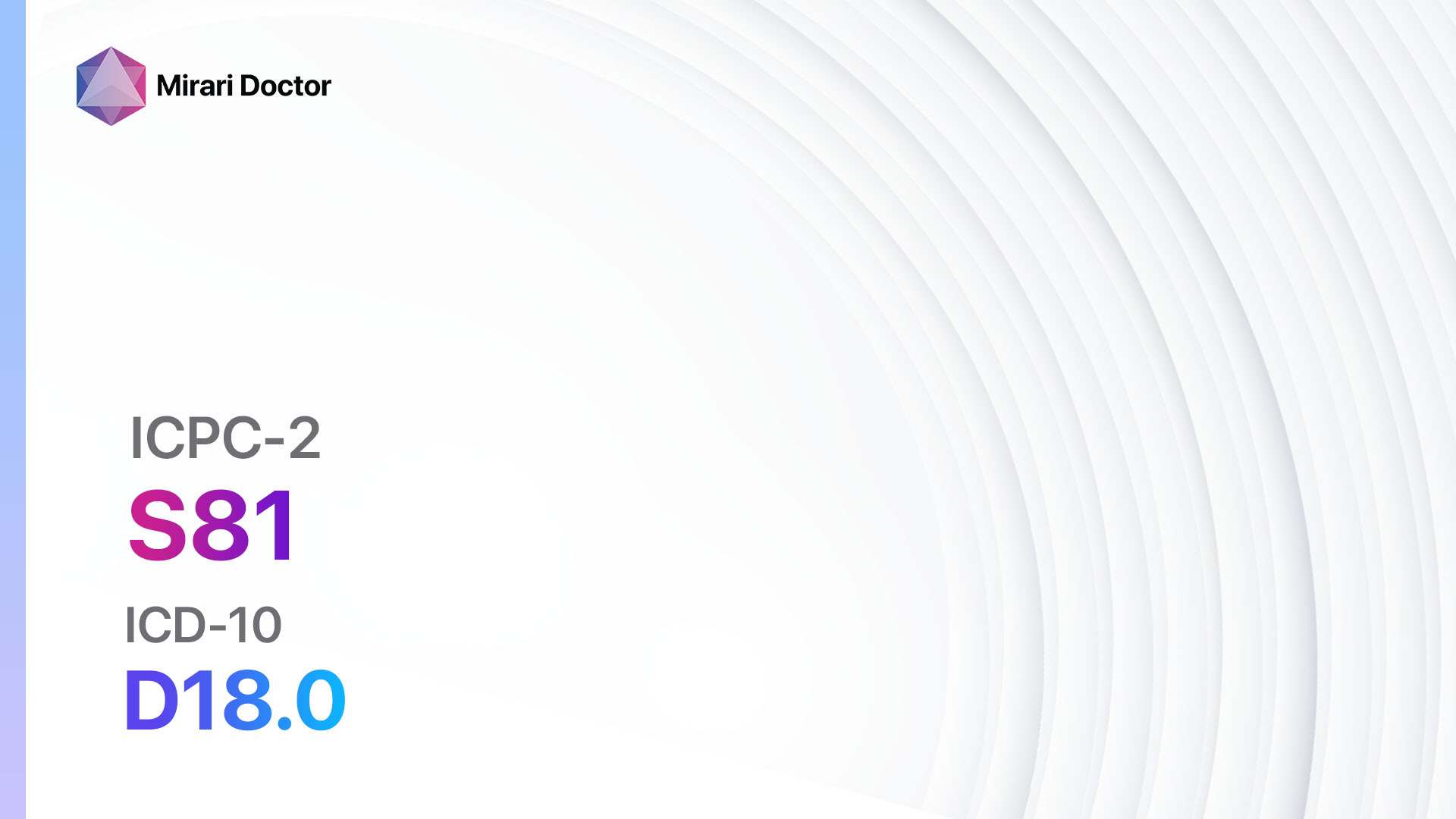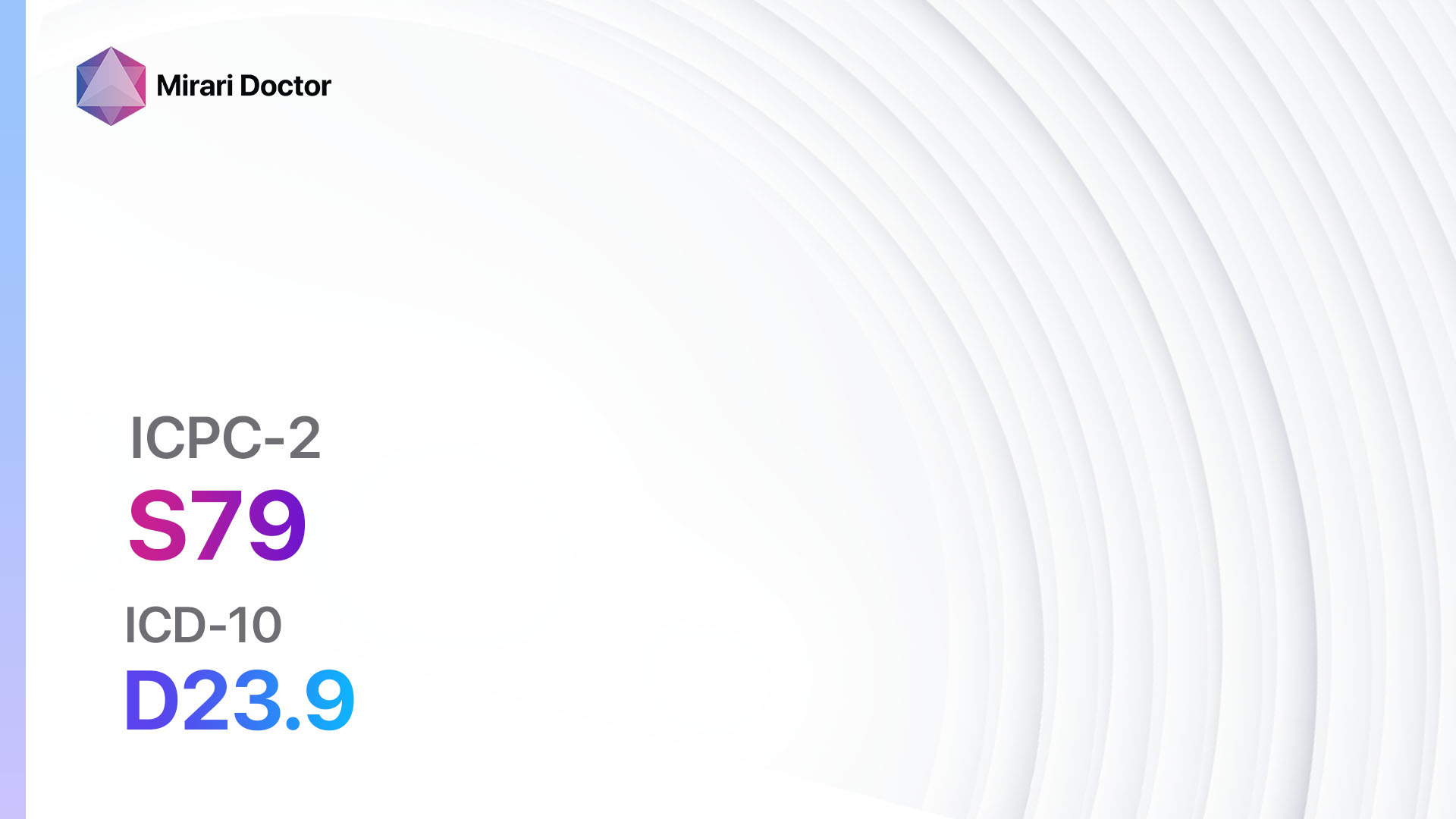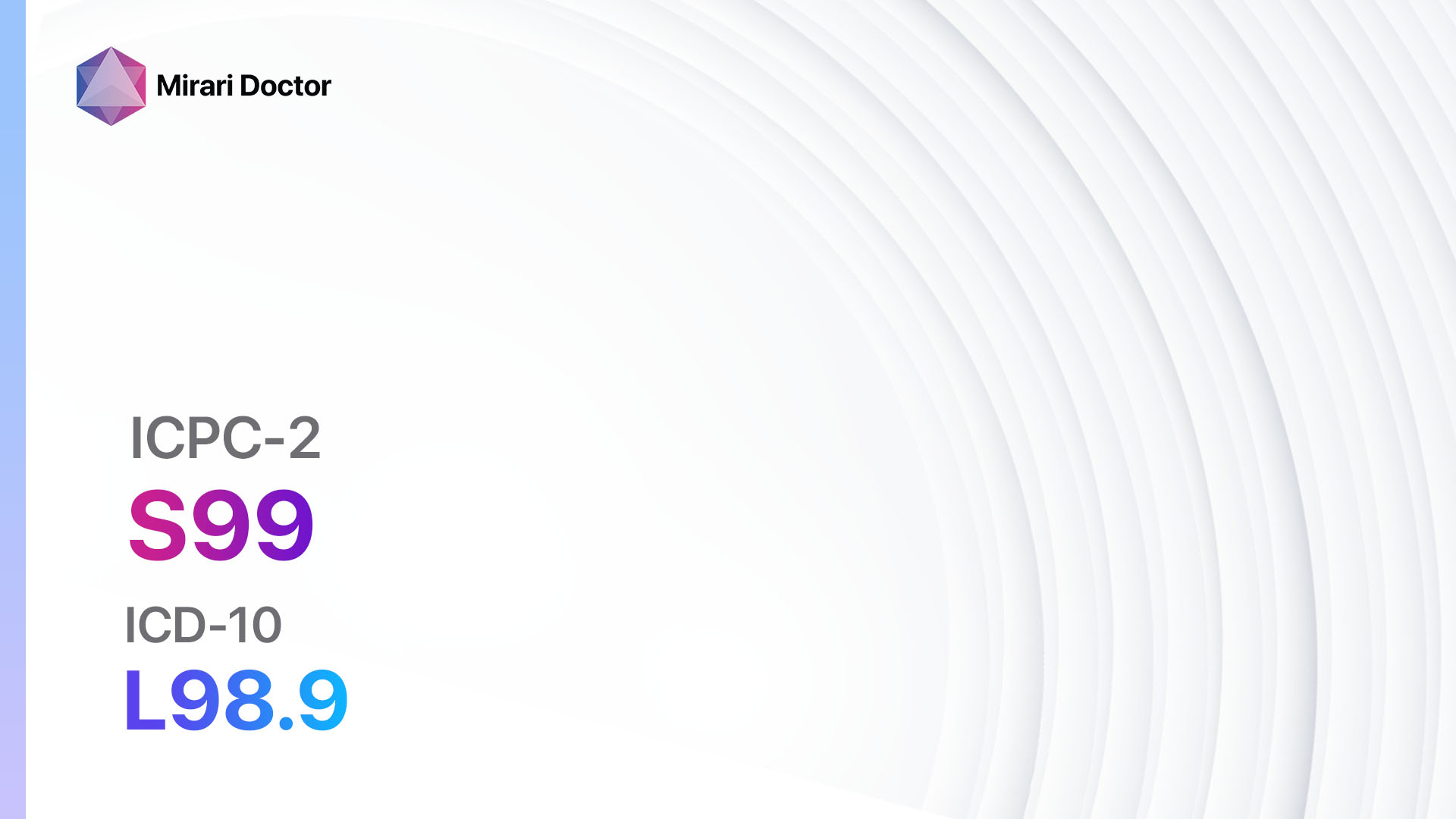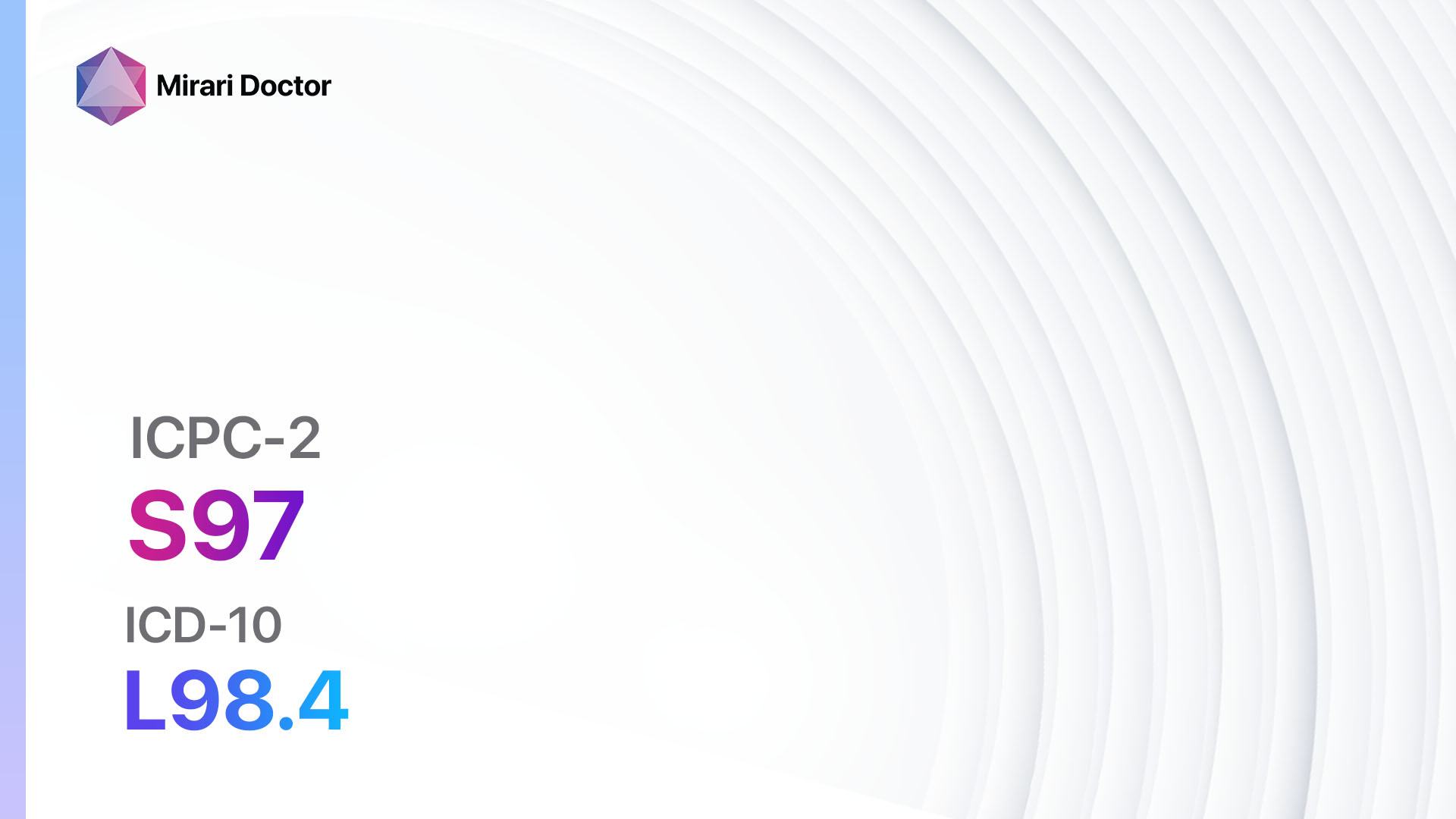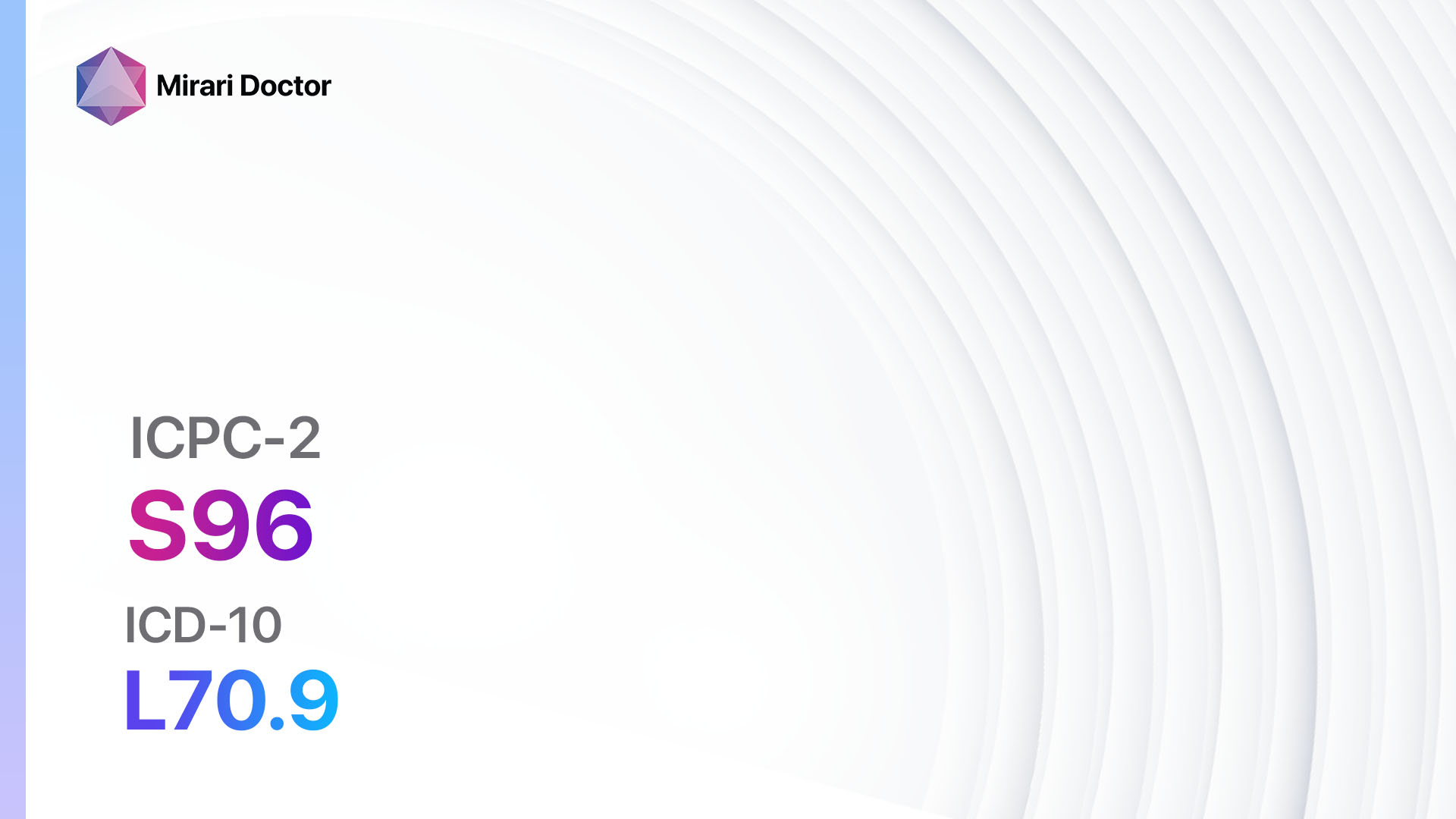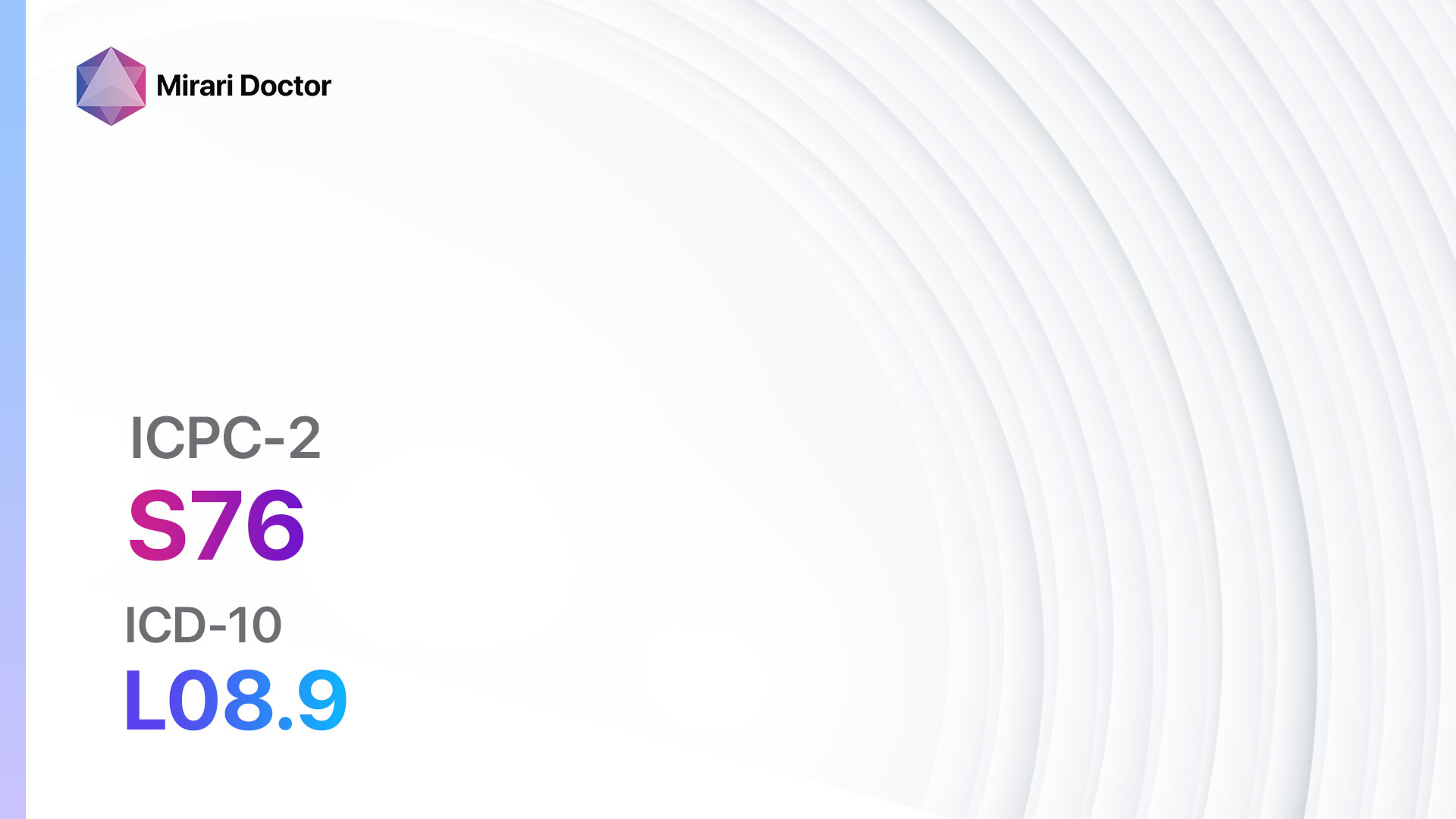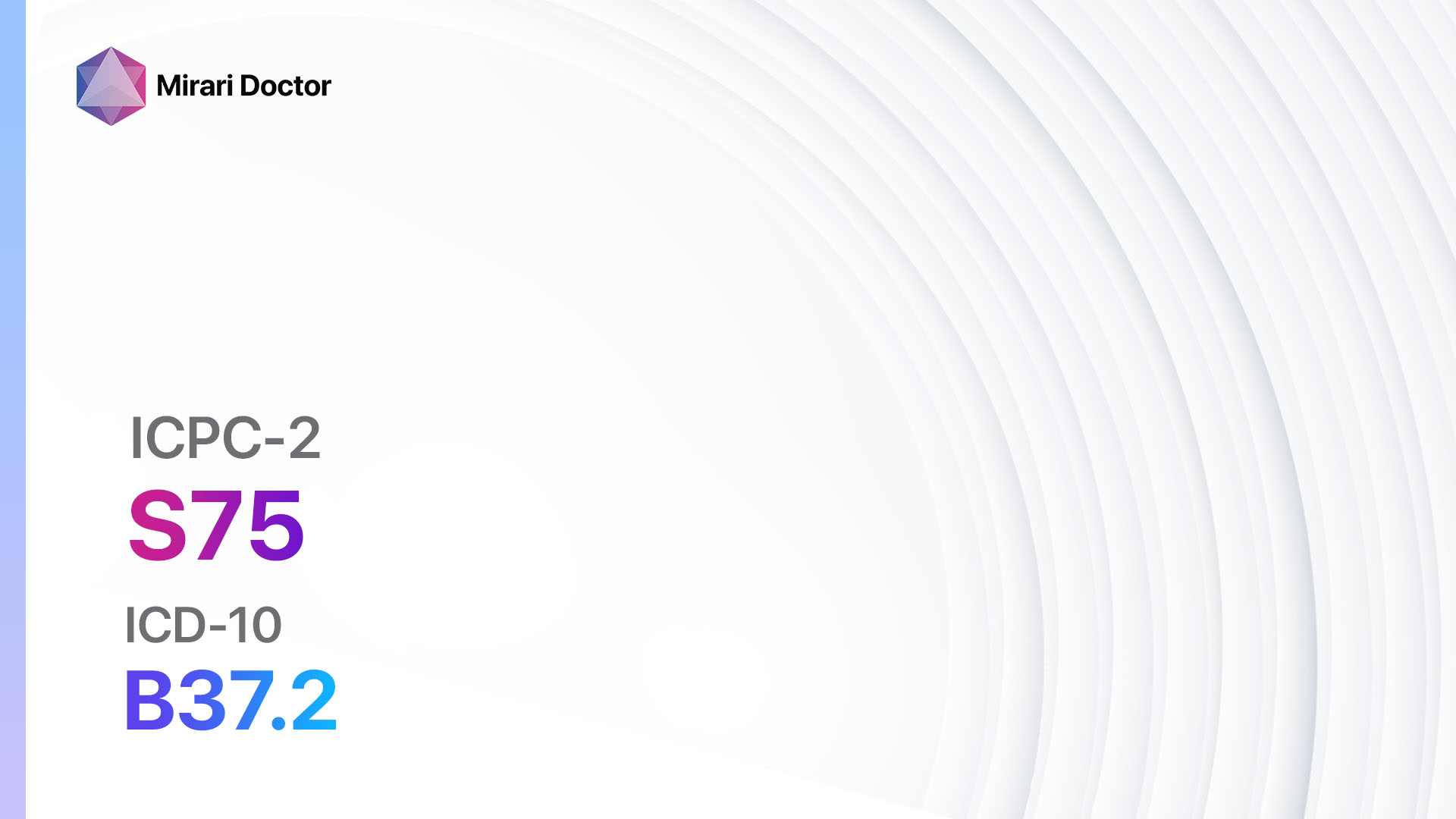
Introduction
Pilonidal cyst/fistula is a condition characterized by the formation of a cyst or abscess in the sacrococcygeal region, near the tailbone. It is commonly seen in young adults and is more prevalent in males[1]. The aim of this guide is to provide a comprehensive overview of the symptoms, causes, diagnostic steps, possible interventions, and lifestyle interventions for pilonidal cyst/fistula.
Codes
Symptoms
- Pain in the sacrococcygeal region
- Swelling and redness in the affected area
- Drainage of pus or blood from the cyst
- Fever and malaise in severe cases[3]
Causes
- Hair follicle blockage: Hair follicles in the sacrococcygeal region can become blocked, leading to the formation of a cyst or abscess.
- Friction and pressure: Continuous friction and pressure in the sacrococcygeal region, such as from sitting for prolonged periods or wearing tight clothing, can contribute to the development of pilonidal cyst/fistula[4].
Diagnostic Steps
Medical History
- Gather information about the patient’s symptoms, including pain, swelling, and drainage.
- Inquire about any previous episodes of pilonidal cyst/fistula.
- Assess the patient’s risk factors, such as obesity or a sedentary lifestyle.
- Determine if the patient has any underlying medical conditions that may contribute to the development of pilonidal cyst/fistula[5].
Physical Examination
- Inspect the sacrococcygeal region for signs of swelling, redness, or drainage.
- Palpate the area to assess for tenderness or the presence of a fluctuant mass.
- Look for sinus tracts or openings in the skin, which may indicate a pilonidal fistula[6].
Determine Severity
- Classify the disease based on severity and depth:
- Simple pilonidal cyst: A single cyst or abscess without any sinus tracts.
- Complex pilonidal cyst/fistula: Multiple cysts or abscesses with sinus tracts[7].
Laboratory Tests
- Complete blood count (CBC): To assess for signs of infection, such as an elevated white blood cell count.
- Culture and sensitivity: If there is drainage from the cyst, a sample can be sent for laboratory analysis to identify the causative bacteria and determine appropriate antibiotic treatment[8].
Diagnostic Imaging
- Ultrasound: Can be used to visualize the cyst or abscess and assess its size and depth.
- MRI: Provides detailed images of the pilonidal cyst/fistula and surrounding tissues, helping to determine the extent of the disease[9].
Other Tests
- Sinogram: A contrast dye is injected into the sinus tracts to visualize the extent and complexity of the pilonidal cyst/fistula.
- Fistulography: A contrast dye is injected into the sinus tracts to identify any connections or branches[10].
Follow-up and Patient Education
- Schedule regular follow-up appointments to monitor the progress of the pilonidal cyst/fistula and assess the effectiveness of the chosen interventions.
- Educate the patient about proper hygiene practices, such as keeping the area clean and dry, and avoiding activities that may exacerbate the condition.
Possible Interventions
Traditional Interventions
Medications:
Top 5 drugs for Pilonidal cyst/fistula:
- Antibiotics (e.g., Cephalexin, Clindamycin):
- Cost: Generic versions can be $3-$50/month.
- Contraindications: Hypersensitivity to antibiotics.
- Side effects: Nausea, diarrhea, rash.
- Severe side effects: Severe allergic reactions, Clostridium difficile infection.
- Drug interactions: Warfarin, oral contraceptives.
- Warning: Complete the full course of antibiotics as prescribed.
- Pain relievers (e.g., Acetaminophen, Ibuprofen):
- Cost: Over-the-counter options are inexpensive. Prescription-strength medications can range from $10-$50/month.
- Contraindications: Allergy to pain relievers, history of gastrointestinal bleeding.
- Side effects: Upset stomach, dizziness.
- Severe side effects: Liver damage, gastrointestinal bleeding.
- Drug interactions: Warfarin, other nonsteroidal anti-inflammatory drugs (NSAIDs).
- Warning: Follow the recommended dosage and avoid long-term use.
- Topical antibiotics (e.g., Mupirocin ointment):
- Cost: Generic versions can be $10-$30/tube.
- Contraindications: Hypersensitivity to antibiotics.
- Side effects: Local skin irritation.
- Severe side effects: Allergic reactions.
- Drug interactions: None reported.
- Warning: Apply the ointment as directed and keep the area clean.
- Steroid injections (e.g., Triamcinolone):
- Cost: $10-$50/injection.
- Contraindications: Active infection, allergy to steroids.
- Side effects: Local pain, skin atrophy.
- Severe side effects: None reported with local injections.
- Drug interactions: None reported.
- Warning: Steroid injections may provide temporary relief but are not a definitive treatment.
- Oral contraceptives (for females):
- Cost: Varies depending on the specific medication and insurance coverage.
- Contraindications: History of blood clots, certain types of cancer.
- Side effects: Nausea, breast tenderness.
- Severe side effects: Blood clots, stroke.
- Drug interactions: Antibiotics, anticonvulsants.
- Warning: Discuss the risks and benefits with a healthcare provider.
Alternative Drugs:
- Zinc supplements: May help with wound healing and immune function.
- Probiotics: Can support gut health and potentially reduce the risk of infection.
- Vitamin C: May aid in collagen synthesis and wound healing.
- Turmeric: Has anti-inflammatory properties and may promote wound healing.
- Garlic supplements: May have antimicrobial properties.
Surgical Procedures:
- Incision and drainage: The cyst or abscess is surgically opened and drained, allowing for the removal of pus and debris. Cost: $500-$2,000.
- Excision and primary closure: The entire cyst or abscess, along with any sinus tracts, is surgically removed, and the wound is closed with sutures. Cost: $2,000-$5,000.
- Marsupialization: The cyst or abscess is surgically opened and sutured to the edges of the wound, creating a permanent opening for drainage. Cost: $2,000-$5,000.
- Bascom’s procedure: A more extensive surgical technique that involves removing the cyst or abscess, along with any sinus tracts, and reconstructing the wound using local flaps. Cost: $5,000-$10,000.
- Laser hair removal: A laser is used to destroy the hair follicles in the affected area, reducing the risk of recurrence. Cost: $500-$1,500 per session.
Alternative Interventions
- Warm compresses: Applying warm compresses to the affected area can help reduce pain and promote drainage. Cost: Minimal.
- Tea tree oil: Diluted tea tree oil can be applied topically to the cyst or abscess to help reduce inflammation and prevent infection. Cost: $10-$20 per bottle.
- Sitz baths: Soaking the affected area in warm water can help relieve pain and promote healing. Cost: Minimal.
- Wound dressings: Using specialized wound dressings, such as hydrocolloid dressings, can help promote healing and prevent infection. Cost: $10-$50 per box.
- Lifestyle modifications: Avoiding prolonged sitting, wearing loose-fitting clothing, and practicing good hygiene can help prevent recurrence. Cost: Minimal.
Lifestyle Interventions
- Weight loss: Losing excess weight can reduce the risk of recurrence and improve overall health. Cost: Varies depending on the chosen weight loss program.
- Regular exercise: Engaging in regular physical activity can improve circulation and promote healing. Cost: Varies depending on the chosen exercise program or gym membership.
- Healthy diet: Consuming a balanced diet rich in fruits, vegetables, and lean proteins can support wound healing and overall health. Cost: Varies depending on individual food choices.
- Proper hygiene: Keeping the affected area clean and dry can help prevent infection and recurrence. Cost: Minimal.
- Avoiding prolonged sitting: Taking breaks from sitting for extended periods can reduce pressure and friction in the sacrococcygeal region. Cost: Minimal.
It is important to note that the cost ranges provided are approximate and may vary depending on the location and availability of the interventions. It is recommended to consult with a healthcare provider for a more accurate cost assessment and to discuss the most suitable interventions for individual cases.
Mirari Cold Plasma Alternative Intervention
Understanding Mirari Cold Plasma
- Safe and Non-Invasive Treatment: Mirari Cold Plasma is a safe and non-invasive treatment option for various skin conditions. It does not require incisions, minimizing the risk of scarring, bleeding, or tissue damage.
- Efficient Extraction of Foreign Bodies: Mirari Cold Plasma facilitates the removal of foreign bodies from the skin by degrading and dissociating organic matter, allowing easier access and extraction.
- Pain Reduction and Comfort: Mirari Cold Plasma has a local analgesic effect, providing pain relief during the treatment, making it more comfortable for the patient.
- Reduced Risk of Infection: Mirari Cold Plasma has antimicrobial properties, effectively killing bacteria and reducing the risk of infection.
- Accelerated Healing and Minimal Scarring: Mirari Cold Plasma stimulates wound healing and tissue regeneration, reducing healing time and minimizing the formation of scars.
Mirari Cold Plasma Prescription
Video instructions for using Mirari Cold Plasma Device – S85 Pilonidal cyst/fistula (ICD-10:L05.9)
| Mild | Moderate | Severe |
| Mode setting: 1 (Infection) Location: 0 (Localized) Morning: 15 minutes, Evening: 15 minutes |
Mode setting: 1 (Infection) Location: 0 (Localized) Morning: 30 minutes, Lunch: 30 minutes, Evening: 30 minutes |
Mode setting: 1 (Infection) Location: 0 (Localized) Morning: 30 minutes, Lunch: 30 minutes, Evening: 30 minutes |
| Mode setting: 2 (Wound Healing) Location: 0 (Localized) Morning: 15 minutes, Evening: 15 minutes |
Mode setting: 2 (Wound Healing) Location: 0 (Localized) Morning: 30 minutes, Lunch: 30 minutes, Evening: 30 minutes |
Mode setting: 2 (Wound Healing) Location: 0 (Localized) Morning: 30 minutes, Lunch: 30 minutes, Evening: 30 minutes |
| Mode setting: 3 (Antiviral Therapy) Location: 0 (Localized) Morning: 15 minutes, Evening: 15 minutes |
Mode setting: 3 (Antiviral Therapy) Location: 0 (Localized) Morning: 30 minutes, Lunch: 30 minutes, Evening: 30 minutes |
Mode setting: 3 (Antiviral Therapy) Location: 0 (Localized) Morning: 30 minutes, Lunch: 30 minutes, Evening: 30 minutes |
| Mode setting: 10 (Dermatitis/Fungus) Location: 0 (Localized) Morning: 15 minutes, Evening: 15 minutes |
Mode setting: 10 (Dermatitis/Fungus) Location: 0 (Localized) Morning: 30 minutes, Lunch: 30 minutes, Evening: 30 minutes |
Mode setting: 10 (Dermatitis/Fungus) Location: 0 (Localized) Morning: 30 minutes, Lunch: 30 minutes, Evening: 30 minutes |
| Total Morning: 60 minutes approx. $10 USD, Evening: 60 minutes approx. $10 USD |
Total Morning: 120 minutes approx. $20 USD, Lunch: 120 minutes approx. $20 USD, Evening: 120 minutes approx. $20 USD, |
Total Morning: 120 minutes approx. $20 USD, Lunch: 120 minutes approx. $20 USD, Evening: 120 minutes approx. $20 USD, |
| Usual treatment for 7-60 days approx. $140 USD – $1200 USD | Usual treatment for 6-8 weeks approx. $2,520 USD – $3,360 USD |
Usual treatment for 3-6 months approx. $5,400 USD – $10,800 USD
|
 |
|
Use the Mirari Cold Plasma device to treat Pilonidal cyst/fistula effectively.
WARNING: MIRARI COLD PLASMA IS DESIGNED FOR THE HUMAN BODY WITHOUT ANY ARTIFICIAL OR THIRD PARTY PRODUCTS. USE OF OTHER PRODUCTS IN COMBINATION WITH MIRARI COLD PLASMA MAY CAUSE UNPREDICTABLE EFFECTS, HARM OR INJURY. PLEASE CONSULT A MEDICAL PROFESSIONAL BEFORE COMBINING ANY OTHER PRODUCTS WITH USE OF MIRARI.
Step 1: Cleanse the Skin
- Start by cleaning the affected area of the skin with a gentle cleanser or mild soap and water. Gently pat the area dry with a clean towel.
Step 2: Prepare the Mirari Cold Plasma device
- Ensure that the Mirari Cold Plasma device is fully charged or has fresh batteries as per the manufacturer’s instructions. Make sure the device is clean and in good working condition.
- Switch on the Mirari device using the power button or by following the specific instructions provided with the device.
- Some Mirari devices may have adjustable settings for intensity or treatment duration. Follow the manufacturer’s instructions to select the appropriate settings based on your needs and the recommended guidelines.
Step 3: Apply the Device
- Place the Mirari device in direct contact with the affected area of the skin. Gently glide or hold the device over the skin surface, ensuring even coverage of the area experiencing.
- Slowly move the Mirari device in a circular motion or follow a specific pattern as indicated in the user manual. This helps ensure thorough treatment coverage.
Step 4: Monitor and Assess:
- Keep track of your progress and evaluate the effectiveness of the Mirari device in managing your Pilonidal cyst/fistula. If you have any concerns or notice any adverse reactions, consult with your health care professional.
Note
This guide is for informational purposes only and should not replace the advice of a medical professional. Always consult with your healthcare provider or a qualified medical professional for personal advice, diagnosis, or treatment. Do not solely rely on the information presented here for decisions about your health. Use of this information is at your own risk. The authors of this guide, nor any associated entities or platforms, are not responsible for any potential adverse effects or outcomes based on the content.
Mirari Cold Plasma System Disclaimer
- Purpose: The Mirari Cold Plasma System is a Class 2 medical device designed for use by trained healthcare professionals. It is registered for use in Thailand and Vietnam. It is not intended for use outside of these locations.
- Informational Use: The content and information provided with the device are for educational and informational purposes only. They are not a substitute for professional medical advice or care.
- Variable Outcomes: While the device is approved for specific uses, individual outcomes can differ. We do not assert or guarantee specific medical outcomes.
- Consultation: Prior to utilizing the device or making decisions based on its content, it is essential to consult with a Certified Mirari Tele-Therapist and your medical healthcare provider regarding specific protocols.
- Liability: By using this device, users are acknowledging and accepting all potential risks. Neither the manufacturer nor the distributor will be held accountable for any adverse reactions, injuries, or damages stemming from its use.
- Geographical Availability: This device has received approval for designated purposes by the Thai and Vietnam FDA. As of now, outside of Thailand and Vietnam, the Mirari Cold Plasma System is not available for purchase or use.
References
- Khanna, A., & Rombeau, J. L. (2023). Pilonidal Cyst and Sinus. In StatPearls. StatPearls Publishing.
- World Health Organization. (2019). International Statistical Classification of Diseases and Related Health Problems 10th Revision (ICD-10)-WHO Version for 2019.
- Mayo Clinic. (n.d.). Pilonidal cyst – Symptoms and causes. Retrieved from https://www.mayoclinic.org/diseases-conditions/pilonidal-cyst/symptoms-causes/syc-20376329
- Brindle, C. (2023). Pilonidal Cyst: Symptoms, Causes, Diagnosis. Verywell Health. Retrieved from https://www.verywellhealth.com/pilonidal-cyst-6890779
- Khanna, A., & Rombeau, J. L. (2023). Pilonidal Cyst and Sinus Clinical Presentation. Medscape. Retrieved from https://emedicine.medscape.com/article/788127-clinical
- WebMD. (n.d.). What Is a Pilonidal Cyst? Retrieved from https://www.webmd.com/skin-problems-and-treatments/pilondial-cyst
- Carle Health. (n.d.). Managing Your Pilonidal Cyst – Symptoms & Treatment. Retrieved from https://carle.org/conditions/digestive-health/pilonidal-disease
- Khanna, A., & Rombeau, J. L. (2023). Pilonidal Cyst and Sinus Workup. Medscape. Retrieved from https://emedicine.medscape.com/article/788127-workup
- Mayo Clinic. (n.d.). Pilonidal cyst – Diagnosis and treatment. Retrieved from https://www.mayoclinic.org/diseases-conditions/pilonidal-cyst/diagnosis-treatment/drc-20376332
- MedicineNet. (n.d.). Pilonidal Cyst Pain, Treatment, Surgery, Causes, Symptoms. Retrieved from https://www.medicinenet.com/pilonidal_cyst/article.htm
Related articles
Made in USA



